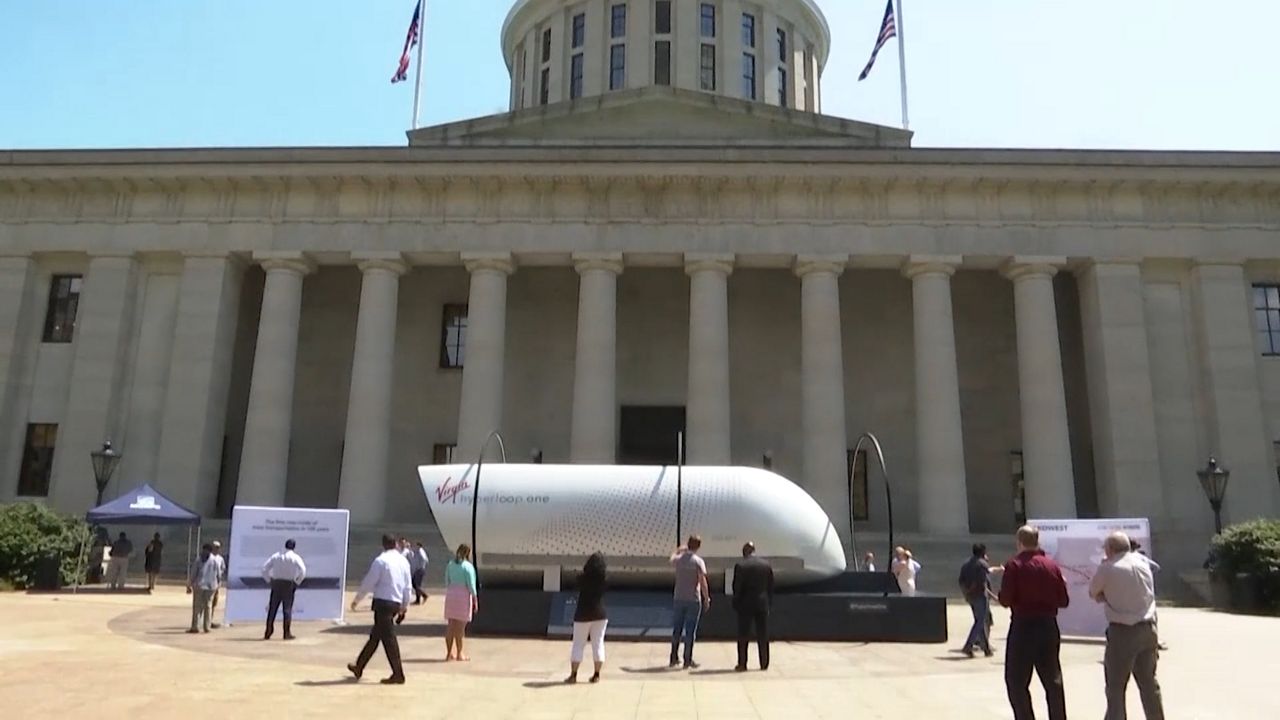COLUMBUS, Ohio — Thirty years from now, the city of Columbus will be a much different place.
The population is expected to soar above three million people, making the need for upgraded transit a must.
What You Need To Know
- A high-speed rail system linking midwestern cities is still on track
- The Mid-Ohio Regional Planning Commission recently released its feasibility report on the Hyperloop systems
- MORPC says the plan would give Ohio $300 billion in economic benefit
- Possible stations include Lima, Marysville, Dublin and Columbus
Leaders with Mid-Ohio Regional Planning Commission are on a mission to look into the future, and make Hyperloop a reality for central Ohio and beyond.
“We see the fact that we're due for innovation in transportation. We're grossly overdue. If you look at history, appropriately every 100 years or so, take a very big leap and disrupt the transportation technology,” said MORPC Strategic Projects Manager Dina Lopez.
MORPC's final Midwest Connect Feasibility Study says a Hyperloop connecting Columbus with Chicago and Pittsburgh is possible and could lead to economic opportunities.
But it's the technology that has yet to be approved in the U.S.
Officials have been engaged with leaders in Washington, as well as Virgin Hyperloop One to identify a way to safely roll out the infrastructure and technology.
“We are a community who already focuses on transportation innovation with the work going on at TRC and Ohio State and the work that Smart Columbus has already done. We have actually proposed a certification site here in central Ohio to Virgin Hyperloop One where that testing could take place for the us government,” said MORPC Transportation and Infrastructure Development Director Thea Ewing.
When it comes to central Ohio, some portion of the route is expected to be built with existing rail corridors, but to achieve optimal speeds of 500 miles per hour, more right of way track is needed.
Possible stations include Lima, Marysville, Dublin and Columbus.
“There can be opportunities to work here and live in another place or live in another place and work here. And those options are going to need to become available over the next 30 years,” said Ewing.
The study found the Hyperloop would ease traffic congestion by nearly two billion cars, cut commercial truck time on the road by 450 million hours, reduce CO2 emissions by almost two and a half million tons, along with $300 billion in overall economic benefits.
“Job creation, expansion of industry, more movement of goods and people because of the disruptive new technology,” said Lopez.
And although Ewing and Lopez say passenger rail is not completely out of the picture, talk has come to a screeching halt.
MORPC says long-term financial plans have not yet been discussed with Hyperloop, but they are in the third phase of proposing a certification site with a six mile track at an undisclosed location in northwest Central Ohio.
They're hopeful testing can happen over the next couple years, and the Chicago to Columbus to Pittsburgh Midwest Connect could be reality by 2050 or before.
A spokesperson for Virgin Hyperloop One says the project will connect 20 percent of the nation’s population and create a globally-competitive Great Lakes “megaregion.”
You can read the MORPC study here:



